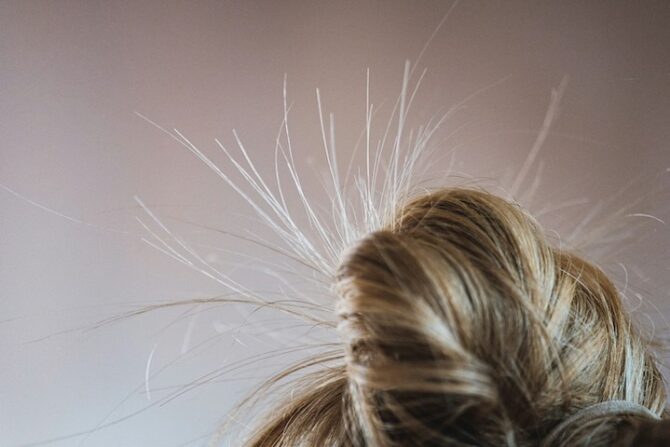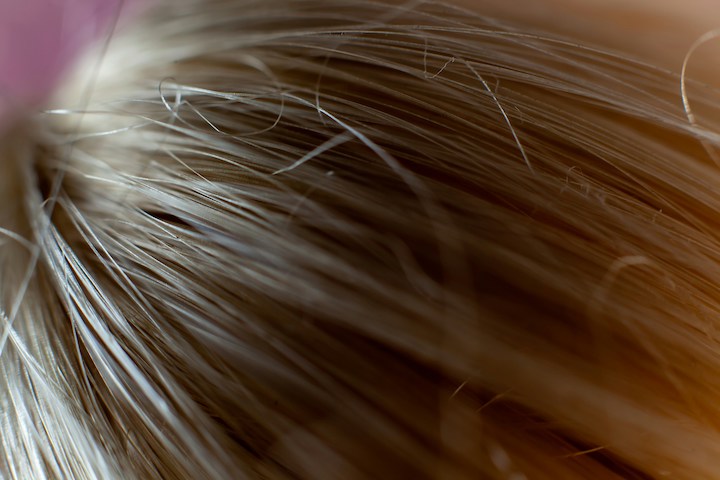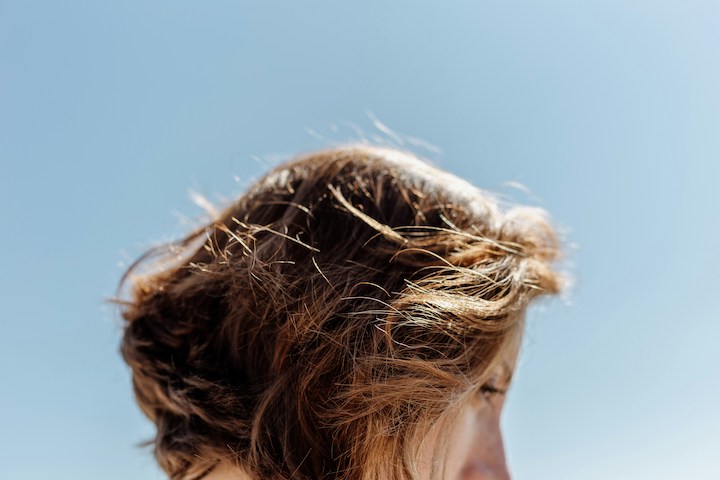You ever look in the mirror and think, “What did I do to deserve this?” One minute, your hair looks fine. The next, it’s a puffball with a mind of its own. I’ve been there too. You smooth it down, you tie it up, you even whisper sweet nothings to it — and still, it rebels.
Here’s what no one tells you: frizz isn’t just a hair problem. It’s a patience problem. It’s waking up ten minutes early just to fight with your hair. It’s trying five different products and wondering if you’re the problem. And if you’re tired of going in circles like I was, I’ve got you.
Let’s sit down, take a deep breath, and break this down together. I went through the trial and error — the greasy serums, the crunchy sprays, the overpromised treatments. I have prepared a frizz control solution comparison. Not just based on what the label says, but on how they actually feel, smell, cost, and perform.
No hype here. Just the truth. And hopefully, some answers.
Table of Contents
What Causes Frizz? (Explained Simply)
Let’s start with the basics.
Frizz happens when your hair is craving moisture but grabs it from the wrong places. Like the air. When your hair is dry or damaged, the outer layer (cuticle) lifts up, which makes it easier for humidity to sneak in and mess things up.
So it’s not just about curly hair, straight hair, or anything in between. It’s about how thirsty your hair is — and how well you’re feeding it.
Some things that make frizz worse:
- Heat styling too often
- Shampooing too much
- Skipping conditioner
- Using a rough towel
- Weather that feels like soup
Once I understood this, I stopped blaming my hair. It wasn’t wild — it was just dry, confused, and a little overworked.
The Three Main Types of Frizz Control Solutions
You don’t need ten products in your cabinet. But it helps to understand the three main categories that almost every frizz-fighting method falls into.
1. Lightweight Leave-Ins
These are the creams, sprays, and milks you put on damp hair after washing. They’re usually water-based and light enough not to weigh your hair down.
Who they’re good for:
If your hair is fine, soft, or gets oily fast, these are your best bet. They don’t make your roots look flat or greasy.
How they feel:
Smooth, barely-there, like a light lotion. You can run your fingers through your hair without feeling anything sticky.
When they work best:
Right after a shower, when your hair is still damp. Just work a small amount through the ends and mid-length.
Common ingredients you’ll see:
- Glycerin (pulls in moisture)
- Aloe vera
- Coconut water
- Panthenol (vitamin B5)
I like leave-ins when I’m rushing out the door. They don’t need heat, they don’t need timing. Just apply and go.
Also Read: Toning Orange Hair: The Best and No-Stress Way to Fix Brassiness
2. Oils and Serums
These seal in whatever moisture your hair already has. They don’t add water — they trap it. Think of them like a topcoat on nail polish.
Who they help:
Medium to thick hair that needs a little more control and shine. If your hair tends to puff up by midday, this can help lock it down.
How they feel:
Slick at first, but they soak in fast if you don’t overdo it. One or two drops is usually enough. Anything more can go greasy real quick.
What to expect:
Glossy ends, smoother texture, and fewer flyaways. But they won’t hydrate dry hair on their own.
Common ingredients you’ll see:
- Argan oil
- Jojoba oil
- Dimethicone (a lightweight silicone)
- Grape seed oil
I reach for these when my hair’s already styled and just needs a little smoothing. Especially on dry days or before going out.
3. Smoothing Treatments (like keratin or masks)
These are the big guns. Hair masks, keratin treatments, or deep conditioners you leave on for a while — sometimes even with heat.
Who they suit best:
Dry, damaged, or textured hair that’s been through a lot. If your ends feel rough or your curls won’t clump, this might help.
How intense they feel:
Some are heavy. Like putting butter on your head. But in the best way. It’s a once-a-week kind of thing, not daily.
Any downsides?
Some of these treatments can build up on fine hair or mess with natural curl patterns if overused.
Common ingredients you’ll see:
- Keratin
- Shea butter
- Protein blends
- Castor oil
I love a good mask on Sunday night. It resets everything. But you’ve got to rinse well and not go overboard.
How I Compared Them (The Simple Way)
I didn’t do this like a lab experiment. No measuring beakers or microscopes here. Just honest use.
I tried each category for a week straight. No mixing. I washed and styled my hair the same way every time, so I could really feel the difference. I looked at:
- How long my hair stayed frizz-free
- How heavy or light it felt
- How easy it was to apply
- Whether it played nice with my other products
- And yeah — how much it cost
I also took note of how my hair felt the next day. Because some things work at first and then betray you by morning.
The Face-Off: Which One Actually Worked Best?
Here’s what I found. Side-by-side, no sugarcoating:
| Feature | Leave-Ins | Oils/Serums | Smoothing Treatments |
|---|---|---|---|
| Ease of Use | Super easy | Needs careful amounts | Takes time |
| Lightweight Feel | Very light | Can feel greasy if overused | Heavy but worth it |
| Results Duration | A few hours | Most of the day | Multiple days |
| Cost | Budget-friendly | Varies | Can be pricey |
| Best For | Daily styling | Finish & polish | Deep repair |
My favorite pick?
Honestly… leave-ins.
Why? Because they just fit into everyday life. No prep, no post-care, no stress. I could apply one, air-dry my hair, and move on with my day. And for someone like me who’s low-maintenance about hair, that matters.
But when my hair feels rough, I reach for the masks. And if I’ve styled and just want shine, I smooth a drop of oil on top. So in a way, they all have their moment. It’s about the order and how much you use.
If You’re Not Sure Which One to Try First…
Let me make it easy.
- If your hair gets greasy fast and you hate anything heavy — start with a lightweight leave-in.
- If your hair always feels dry and you like a little shine — try a small amount of serum on the ends.
- If your hair feels rough, tangled, or like it’s been through too much — book a night in and try a mask.
And remember, you don’t have to marry the first product you try. It’s okay to experiment. Just give it time — at least a week — before moving on to the next.
Also: avoid piling everything on at once. You’ll end up with sticky, limp hair, and that’s just not cute.
Check Out: Best Hair Care for Hair Loss: Best Products And Tips
Quick Tips to Boost Any Frizz Routine
Here are a few small things that make a big difference:
- Use a microfiber towel — it’s gentler than cotton and doesn’t rough up the hair cuticle.
- Apply products on damp hair — not soaking wet, not bone dry.
- Don’t skip conditioner — ever. Even if it’s lightweight.
- Trim your ends regularly — split ends make frizz worse.
- Avoid over-washing — aim for 2–3 times a week if possible.
- Sleep on a silk pillowcase — cotton can cause friction.
- Use a wide-tooth comb — especially on wet hair.
These aren’t magic fixes, but they make every product you use work better.
Conclusion
I know how tempting it is to fill your bathroom with bottles that promise miracles. But here’s the truth: you don’t need all of them. You just need the right one for your hair and a routine you can actually stick with.
Frizz is frustrating, sure. But it’s not unbeatable. You don’t have to straighten your hair into submission or spend hours styling. You just need something that works with your hair, not against it.
And if your hair still puffs up sometimes? That’s okay too. It’s not failure — it’s just life. A little grace goes a long way.
Frequently Asked Questions
What’s the best frizz control product for fine hair?
Start with a lightweight leave-in. Look for one labeled “weightless” or “light moisture.” Avoid anything heavy or oil-based unless it’s just on the ends.
Can I use more than one frizz solution at once?
You can, but it’s easy to overdo it. If you layer, start with the lightest product (like a leave-in) and finish with a drop of oil only if you need it. Less is more.
How long does it take to see results?
Most frizz control products work right away. But long-term results — like smoother texture or better hydration — show up after 2–3 weeks of consistent use.
Are expensive products always better?
Not at all. Some drugstore leave-ins work better than salon brands. It’s more about ingredients and how your hair responds than the price tag.





